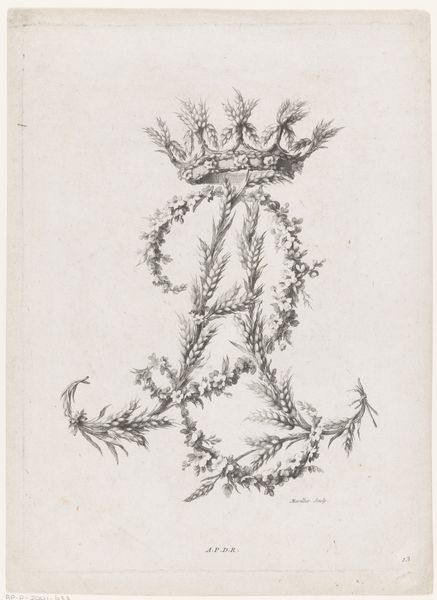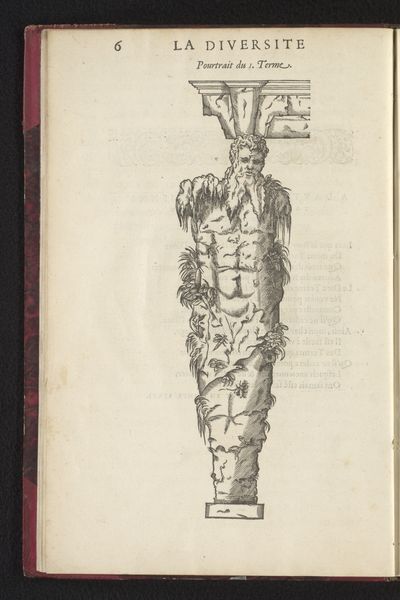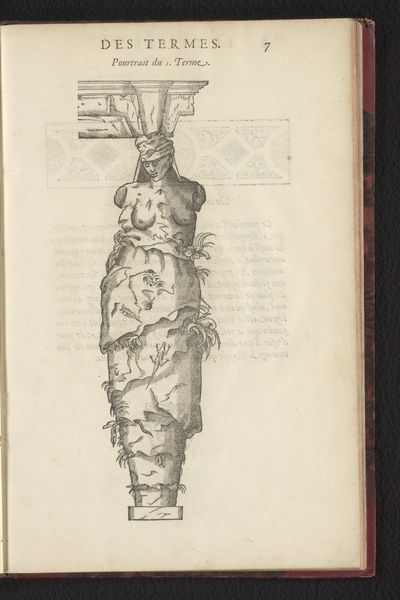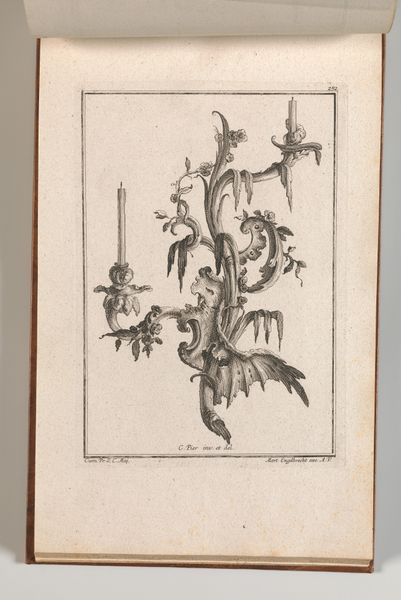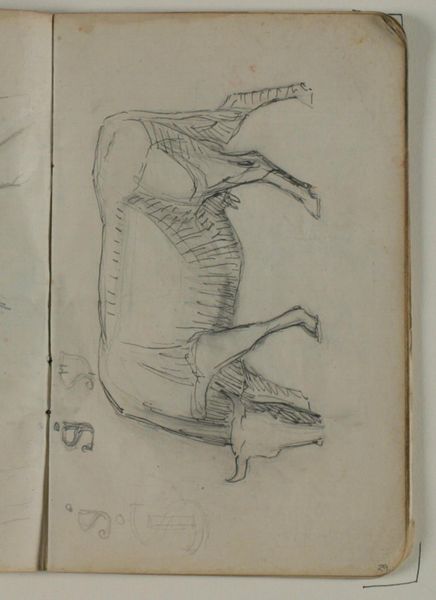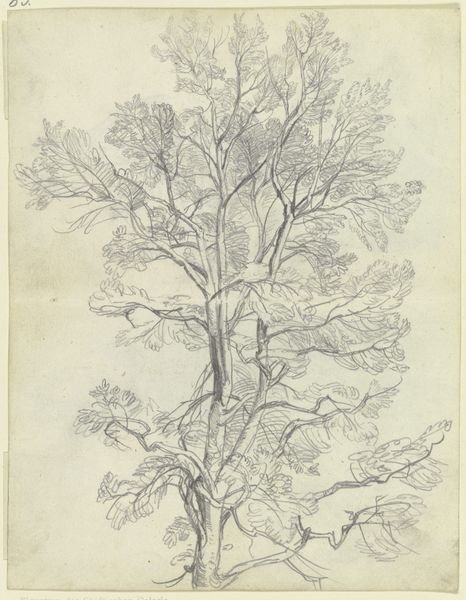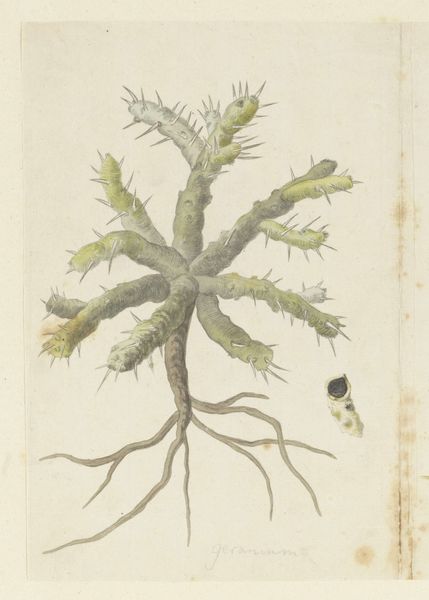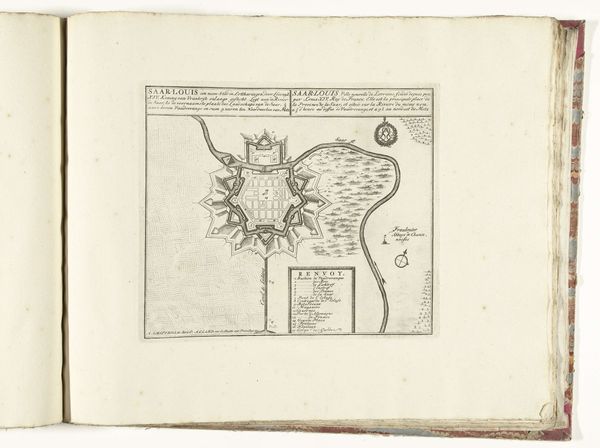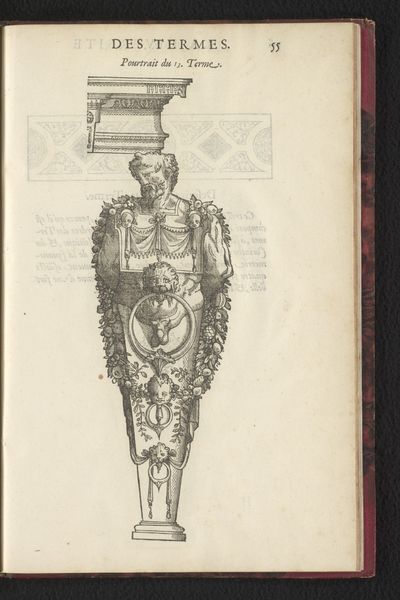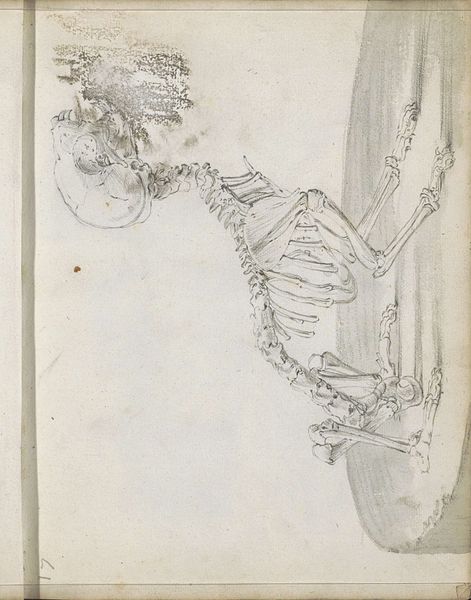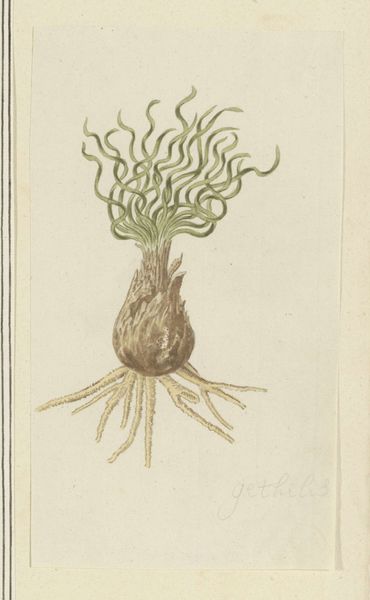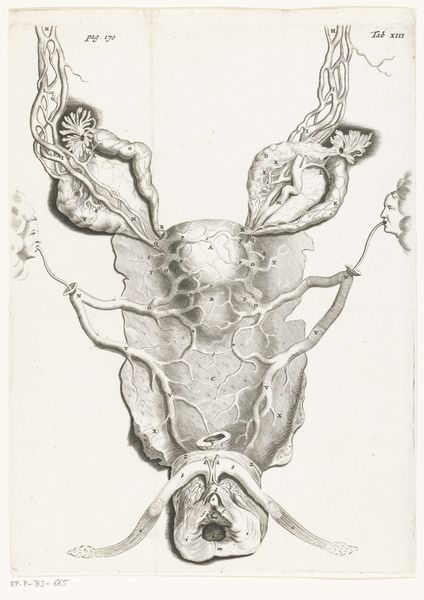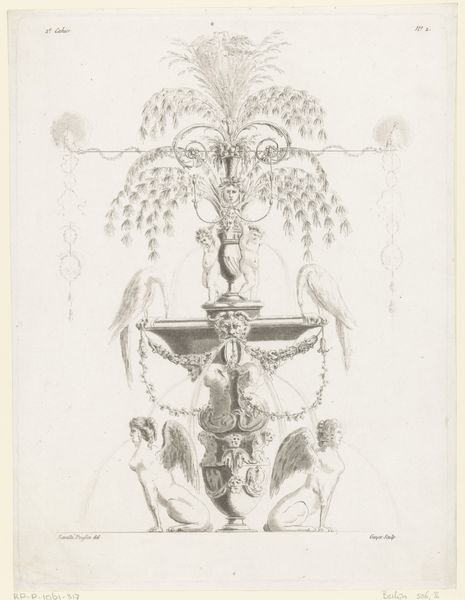
drawing, print, ink
portrait
drawing
ink drawing
pen drawing
figuration
11_renaissance
ink
history-painting
italian-renaissance
Dimensions: Overall: 13 1/16 x 9 1/16 x 2 1/2 in. (33.1 x 23 x 6.4 cm)
Copyright: Public Domain
Curator: So, here we have Carlo Ruini’s “Anatomia del Cavallo. Infirmita del Cavallo” dating from 1602, currently held in the Metropolitan Museum of Art. It’s an ink drawing, quite fascinating, really. Editor: Immediately, I see something that unsettles me—a horse splayed open, veins and arteries laid bare like a roadmap of vulnerability. Curator: Indeed. Consider the paper itself, likely handmade, the ink painstakingly applied. This wasn’t mass-produced imagery; it reflects specialized knowledge, a direct engagement with craft, and a relatively exclusive consumer base for such knowledge. Think about the printer too and what a plate such as this signified. Editor: You know, there's a raw beauty here, like a macabre tapestry. It speaks to me about mortality, the ephemeral nature of life. And also maybe the dawn of something…a dissection? Not exactly art, but getting close? Curator: Yes, these anatomical studies bridge art and science. Remember, Ruini was a lawyer, not necessarily a trained artist or scientist in the modern sense. This work emerged within a specific social and intellectual climate; it highlights shifts in how humans understood, and attempted to control, animal bodies. This sort of diagram wasn't merely representational; it was instrumental. Editor: I wonder if it wasn’t considered beautiful. This may be my artist brain talking here, but isn't this…gorgeous? All those tributaries fanning out from some kind of organic center… Curator: "Beautiful" perhaps isn't the primary intention, but you’re right, aesthetics still play a role. Even the linear precision points toward specific approaches for understanding equine anatomy prevalent at the time. And let's think about access too; such information wouldn’t have been widely available, reflecting social stratifications within intellectual pursuits. Editor: Looking closer, I’m caught by how delicately those ink lines trace something so brutally honest. It’s strange that this was necessary…I'd imagine these images as both disturbing and enlightening to audiences then. Curator: And even to us, centuries later. Examining art like Ruini's piece invites us to see these drawings, or prints of them, as potent cultural objects shaped by specific socio-economic factors and beliefs regarding production and reception of knowledge. Editor: Ultimately it reminds us of how complex knowledge creation can be when seen across the scope of an epoch. Thanks for laying it all out for me today!
Comments
No comments
Be the first to comment and join the conversation on the ultimate creative platform.
